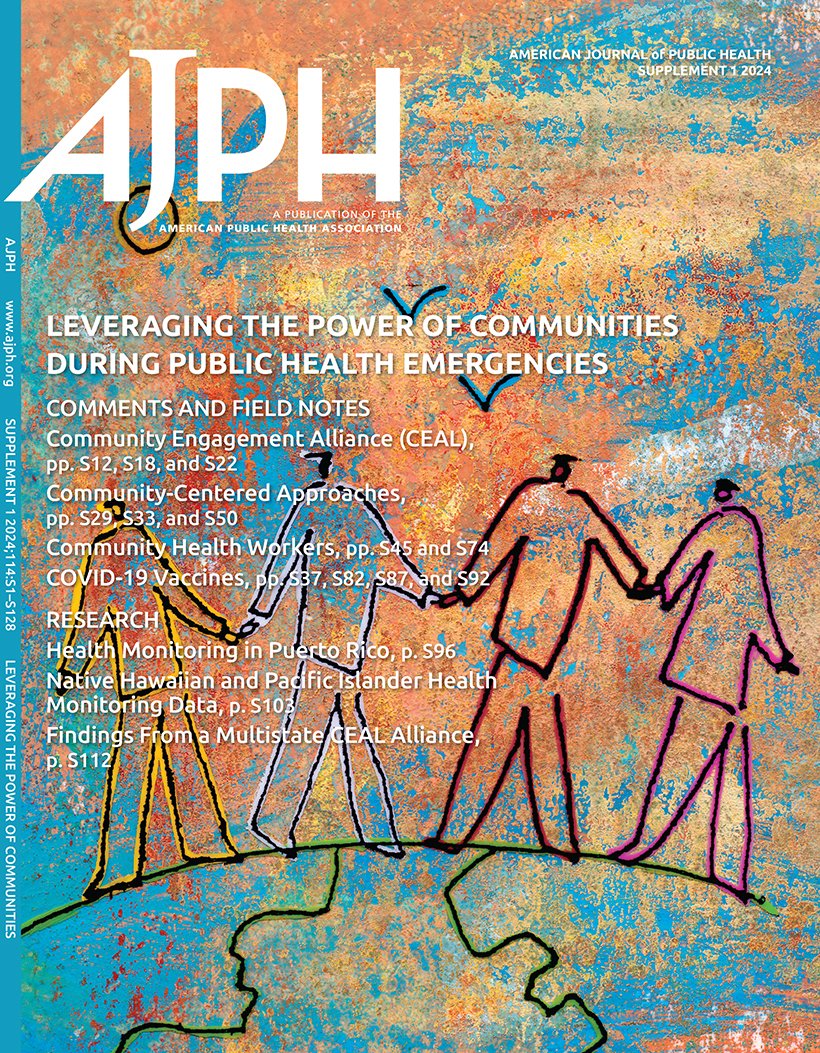LGBTQ+高中生的不良童年经历:来自2023年青少年风险行为调查的国家证据
IF 9.6
1区 医学
Q1 PUBLIC, ENVIRONMENTAL & OCCUPATIONAL HEALTH
引用次数: 0
摘要
目标。提供美国高中生不良童年经历(ace)暴露的人口代表性估计,分别按性取向、性别认同和3个人口统计学调节因子:出生性别、种族/民族和年龄。方法。利用2023年美国全国青少年危险行为调查(n = 12131)的数据,本横断面研究计算了描述性统计,估计了多变量回归,并筛选了恶作剧的受访者。结果。女同性恋者、男同性恋者、双性恋者、跨性别者和有问题者(LGBTQ+)的学生报告了8种不同ACE的暴露增加,累积ACE得分为3.0(95%可信区间[CI] = 2.9, 3.1),而异性恋者(cishet)的学生则为1.8 (95% CI = 1.7, 1.9)。这种模式在所有人口统计亚组中都存在,不能用恶作剧的应答者来解释。近一半(46.1%);95% CI = 39.7, 52.5)的所有性别少数群体报告了4次或以上的ace,而顺性少数群体为34.5% (95% CI = 30.9, 38.0),单性少数学生为15.4% (95% CI = 14.2, 16.7)。结论。第一个针对美国高中生的全国性ACE患病率数据显示,LGBTQ+青年——尤其是跨性别青年——面临的虐待、忽视和其他逆境的程度远远高于普通青年。公共卫生。2025年5月8日提前在线发布:e1-e9。https://doi.org/10.2105/AJPH.2025.308094)。本文章由计算机程序翻译,如有差异,请以英文原文为准。
Adverse Childhood Experiences Among LGBTQ+ High School Students: National Evidence From the 2023 Youth Risk Behavior Survey.
Objectives. To provide population-representative estimates of US high school students' exposure to adverse childhood experiences (ACEs), separately by sexual orientation, gender identity, and 3 demographic moderators: sex assigned at birth, race/ethnicity, and age. Methods. Using data from the 2023 US National Youth Risk Behavior Survey (n = 12 131), this cross-sectional study calculated descriptive statistics, estimated multivariable regressions, and screened for mischievous respondents. Results. Lesbian, gay, bisexual, transgender, and questioning (LGBTQ+) students reported elevated exposure to 8 separate ACEs, with a cumulative ACE score of 3.0 (95% confidence interval [CI] = 2.9, 3.1), compared with 1.8 (95% CI = 1.7, 1.9) among cisgender-heterosexual (cishet) students. This pattern held across all demographic subgroups and could not be explained by mischievous responders. Nearly half (46.1%; 95% CI = 39.7, 52.5) of all gender minorities reported 4 or more ACEs, compared with 34.5% (95% CI = 30.9, 38.0) of cisgender sexual minorities and 15.4% (95% CI = 14.2, 16.7) of cishet students. Conclusions. The first national ACE prevalence data for US high school students show that LGBTQ+ youths-particularly transgender youths-face far greater levels of abuse, neglect, and other adversities than cishet youths. (Am J Public Health. Published online ahead of print May 8, 2025:e1-e9. https://doi.org/10.2105/AJPH.2025.308094).
求助全文
通过发布文献求助,成功后即可免费获取论文全文。
去求助
来源期刊

American journal of public health
医学-公共卫生、环境卫生与职业卫生
CiteScore
9.50
自引率
3.90%
发文量
1109
审稿时长
2-4 weeks
期刊介绍:
The American Journal of Public Health (AJPH) is dedicated to publishing original work in research, research methods, and program evaluation within the field of public health. The journal's mission is to advance public health research, policy, practice, and education.
 求助内容:
求助内容: 应助结果提醒方式:
应助结果提醒方式:


